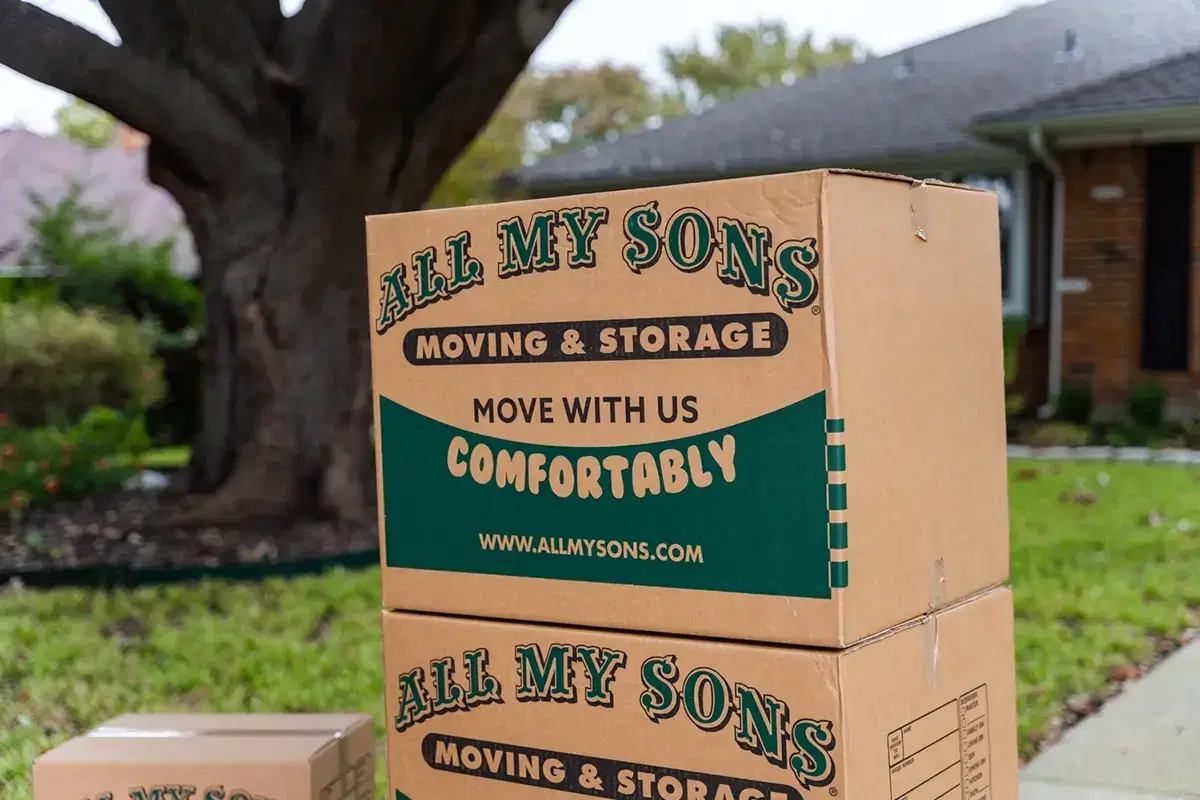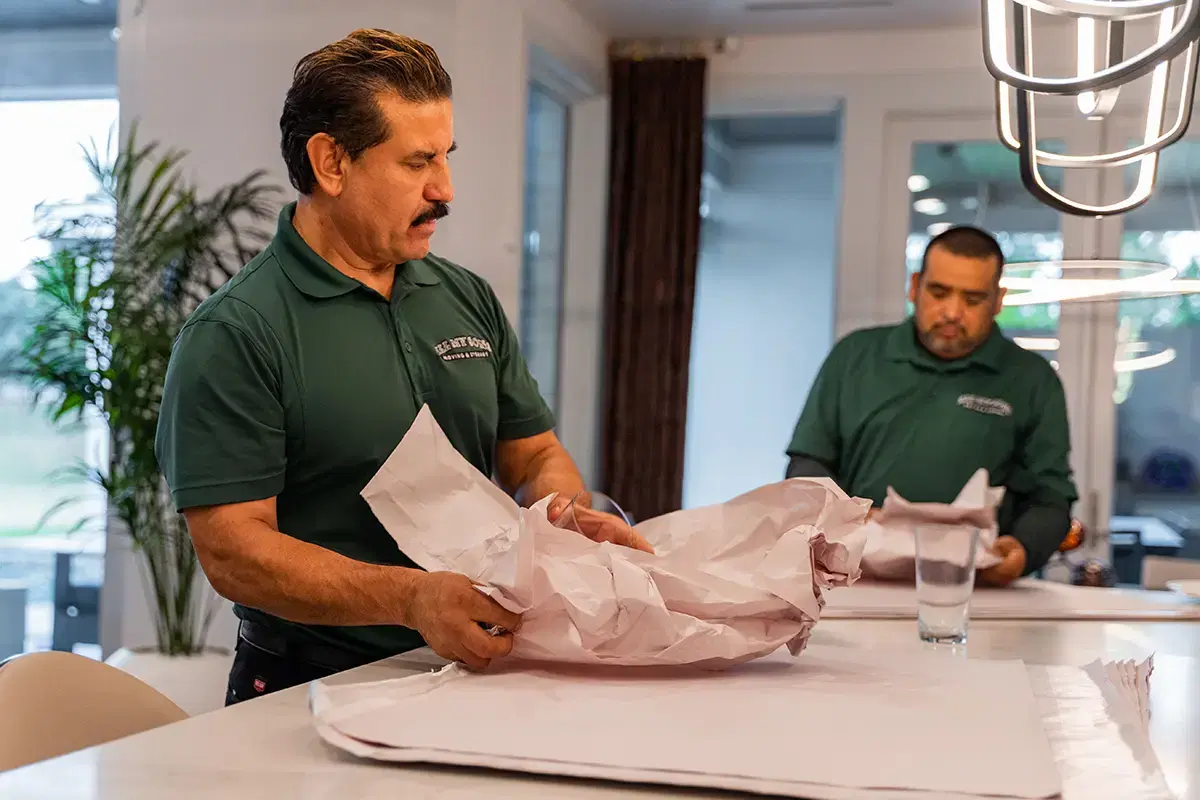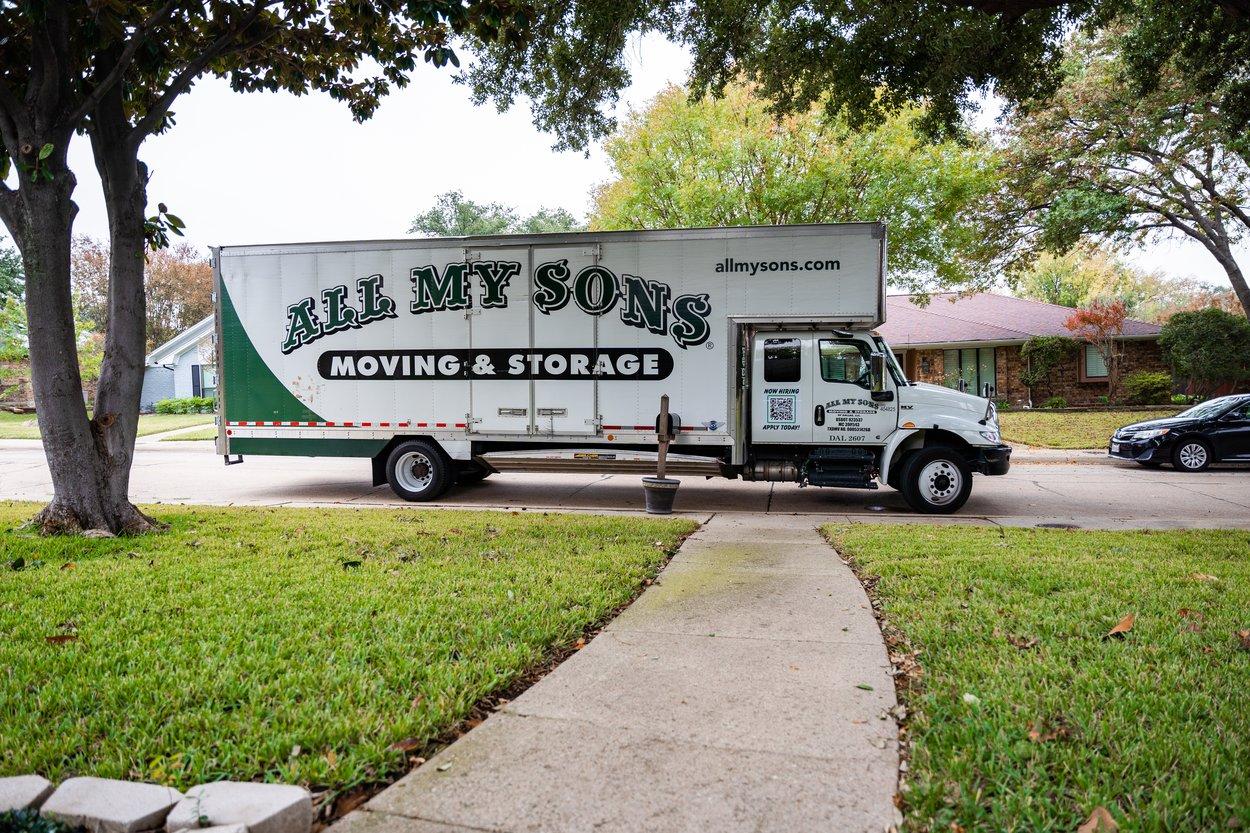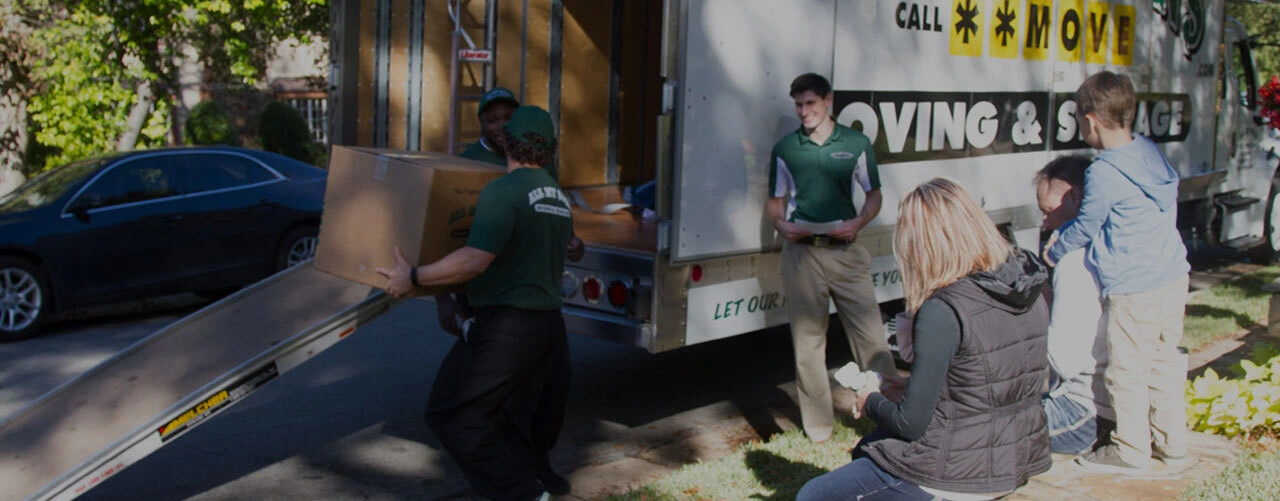No More Boxes? Try These 15 Moving Box Alternatives
You can get all the packing supplies you need for a move from All My Sons Moving & Storage, or skip the tedious time sink of packing altogether when you ask for professional packing services.
Need to make a move but limited on boxes? Maybe you’ve already exhausted all your sources for free or low-cost boxes, or you are simply looking to make the most eco-friendly move possible. Whatever the reason, you need to make what you have work. After you maximize the space in the moving boxes you do have, you can turn to these moving-box alternatives to complete your move.
Take note, moving a dozen oddly shaped items is vastly different from moving a dozen uniform moving boxes. Moving boxes can be stacked and moved together on dollies, while oddly shaped items might need to be moved individually. If you are using unconventional containers for your move, then your move might need to slow down and you should add another hour to your moving time estimate. You should also note that some professional movers may decline to put open items (like laundry baskets and tote bags) in their moving truck and you may have to make other arrangements to get these items to your destination.
These 15 alternatives to moving boxes are all items that can be found hanging around most households. You might have to pack these items to take to your new home regardless, so you might as well make them work for you at the same time.
Original Packaging
Ideal for Packing: Televisions, computers, and small kitchen appliances.
The box your television, computer, or kitchen appliance came in could be the key to getting that delicate item moved to your new home safely. This box comes in just the right size and with the right materials to keep your item snug and secure. If you relocate often, it is in your best interest to hang onto the original packaging for items like electronics and small appliances. Raid the closets and dig those forgotten boxes back out.
Luggage and Suitcases
Ideal for Packing: Books, pots and pans, media collections, photo albums, shoes, and clothes.
Travel enthusiast? Those big luggage bags and suitcases you keep in your back closet could be the key to getting some of your heavier items moved safely. Watch out not to overload your suitcases. Always check the weight of your luggage before you declare it packed and ready. If you are unable to lift or move the bag safely, repack it with some lighter items inside. Heavy, overloaded luggage is a recipe for damaged items and injured movers, but if you pack smart then you can get your items moved just as easily as you could with boxes.
Briefcases
Ideal for Packing: Files, books, and small media collections.
Your work bag makes a great stash space for some essential household items. We recommend you avoid putting any essential paperwork in a briefcase that’s going on your moving truck, but if the briefcase is coming with you then it could be a good packing spot for your essentials and emergencies items. These items include important documents like rental contracts and government IDs, extra cash, boxcutters, and medications. Depending on the size of your briefcase, you might even be able to squeeze in a few slim paperback books or your collection of CDs. As always, be careful not to overload your briefcase. You should be able to carry the briefcase comfortably in one hand.
Dresser Drawers
Ideal for Packing: Clothes, shoes, books, files, sheets, blankets, and towels.
Ask your professional movers if moving your full dresser drawers is an option. If you’re able to move your dresser drawers with items inside, you won’t even need to bother emptying the drawers prior to your move. Simply take out the drawers, wrap them in plastic wrap, and load them on the truck. This option works best for the clothes that are already in your dresser drawers, but in a pinch you could put additional items like books and shoes in the dresser drawers before you wrap them. Be careful to make sure the drawers are still fairly easy to lift and carry when they are loaded.
File cabinet drawers can also be moved with files inside. Once again, always check with your professional movers to ensure this is okay with them before you neglect to buy file boxes.
Plastic Bins
Ideal for Packing: Collectibles, glasses, dishes, soft kitchen items, shoes, and clothes.
Got plastic bins lying around the house? Put them to work. Bonus points if your plastic bin has a lid on it. Plastic bins work great for those items that might need a little extra protection like your collectibles, glasses, and dishes. Use soft household materials like sheets, blankets, and kitchen towels and hot pads to keep dishes and glasses safe inside their plastic bin.
Careful when stacking plastic bins that you do not put an overly heavy bin on top of a lighter bin. While plastic bins may be more durable than many cardboard boxes, they do have limits. To avoid your bin collapsing, make sure the bins you stack on top of it are lighter.
Always make sure to label your plastic bins or keep an extensive moving inventory. This will help you keep track of where your belongings are.
Tote Bags
Ideal for Packing: Files, cables, charging cords, spices, books, kitchen utensils, and assorted décor items.
Totes from grocery stores, your favorite bookshop, or your artist friend’s website make a great quick-carry option for lightweight items that are not particularly delicate. If you are moving perishable food yourself, carrying them in an insulated tote bag might be your best bet to get them safely to your next fridge.
Put the heavier, more durable items toward the bottom of the tote. This helps give the tote bag a stable base. Your lighter items like charging cords and bundled kitchen utensils can go toward the tops of your tote bags. Be careful not to overload the tote bags, and always carry your totes upright so that they do not spill contents.
Backpacks
Ideal for Packing: Books, bathroom toiletries, towels, sheets, clothes, shoes, and media collections.
You’ll want to keep at least one backpack with you for your essentials and emergencies stash. If you have an eclectic collection of backpacks, then load them up with other household items. Backpacks can carry some heavy items like books and media collections, but be careful not to overload your backpacks. You don’t want to strain your back or one of your mover’s backs.
Backpacks can also have lots of little pockets for your small items like batteries, furniture hardware pieces, and bathroom toiletries. Find all the little nooks and crannies your bag has to offer and fill ‘em up!
Pillowcases
Ideal for Packing: Clothes, sheets, towels, and shoes.
Pillowcases make fantastic bags for light items. Stuff them with clothes, sheets, towels, or clean shoes and then tie the top closed so that nothing spills during your move. Pillowcases may pose a challenge to label, but if you have paper tape and a permanent marker then you might be able to pull it off.
Laundry Baskets
Ideal for Packing: Sheets, towels, clothes, shoes, assorted décor, pots and pans, and toys.
Laundry baskets and hampers are great for carrying some light, non-delicate items. Place heavier items like toys, shoes, and dense décor pieces at the bottoms of your baskets and load the tops with lighter items like clothes, towels, or sheets. Careful not to put anything that might easily get crushed in your baskets, especially if you stack baskets on top of each other during the move.
Large Pots
Ideal for Packing: Spices, dishes, kitchen towels and hot pads, and smaller pots and pans.
Big crock pots, bowls, and colanders can safely nest other items. Fill your large pot with kitchen utensils, spices, or smaller dishes like teacups before you pack it into another container like a moving box or a laundry basket. You can add some packing paper or bubble wrap to the bottom of the pot to prevent items inside from scratching on the walls of your large pot.
Grocery Bags
Ideal for Packing: Kitchen pantry items, kitchen utensils, bathroom toiletries, small hardware, toys, cables, and charging cords.
If you have grocery bags hanging around, either because you reuse them or because you collect them for later recycling, you can use some to help complete your move. Grocery bags are ideal for small items, just watch out for puncture risks. You can also use leftover grocery bags as a packing material. Fill bags with soft items, shredded paper, or just wadded bags and use it to cushion delicate items while you pack suitcases, laundry baskets, or plastic bins.
Resealable Plastic Baggies
Ideal for Packing: Small hardware, batteries, cables, charging cords, spices, and bathroom toiletries.
Resealable plastic bags make great containers for small items that should be kept together like your furniture hardware pieces. Label your bags with a black permanent marker so that you remember what items are used for. Like grocery bags, resealable plastic baggies can also be used as additional packing material if you are running low on bubble wrap, packing paper, or packing peanuts.
Trash Bags
Ideal for Packing: Clothes, sheets, towels, and shoes.
Trash bags work best for bulky but lightweight items. Your bedsheets, comforter, pillows, and some shoes might be able to comfortably travel in trash bags. Do not put anything heavy or sharp in a trash bag and always be on the lookout for puncture risks. Be sure to label trash bags with paper tape and a black permanent marker so that you remember what is inside and you don’t get any trash bags mixed up with your actual garbage.
Crates
Ideal for Packing: Shoes, books, pots and pans, towels, toys, and assorted décor.
You might have a few crates lying around keeping some fun décor items, old toys, or other memorabilia items safe. Time to put that crate to work. Crates with handles might be able to safely carry some heavy items like books or pots and pans. Always put the heaviest items on the bottom of your crate and the lighter items toward the top. Unless your crate has a lid, you might want to avoid stacking crates or transporting them in the back of a moving truck.
Garbage Cans
Ideal for Packing: Cleaning supplies, bathroom toiletries, and assorted décor.
The bathroom rubbish bin could carry the last of the cleaning supplies you need to mop up your counters and scrub the floors before you officially depart your old home. Or you could fill it with bathroom toiletries like shampoo, toothpaste, and your skincare routine, provided you give the bin a good scrub before you put anything inside. Keep paper tape and a black marker on hand to label your trash bin contents as you make your move.
Get Moved Comfortably
Now that everything you could possibly use to pack has been packed full, it’s time to set out on your move. Remember, you might need to take a little extra time and care with your odd assortment of moving containers, but at the end of your move there might be less waste and less money spent on moving supplies.
Are you prepared for your next move? You can always find extra packing supplies at All My Sons Moving & Storage if the laundry baskets just aren’t going to cut it. We’ll even do all the professional packing services and let you focus on settling into your new home. Moving local or long-distance, All My Sons provides everything you need for a stress-free move. Get into your new apartment, house, or office with help (and plenty of supplies!) from the professionals. Call 1-866-726-1579 to reach one of our 90+ locations across the US or use the quote button below to get started on your move.
Quick Moving Tips

Move Out Cleaning Checklist
A task that falls on your final move-out checklist is a thorough deep cleaning of your old home or apartment.

How to Pack Picture Frames for a Move
Follow these 5 steps to packing your picture frames so that your photos, mirrors, and prized paintings can grace the walls of your next home in great condition.

How to Prep Your New Home For Move-In
Before you start packing up to get moved, there are a few important steps you should take to prepare your new home for move-in.


